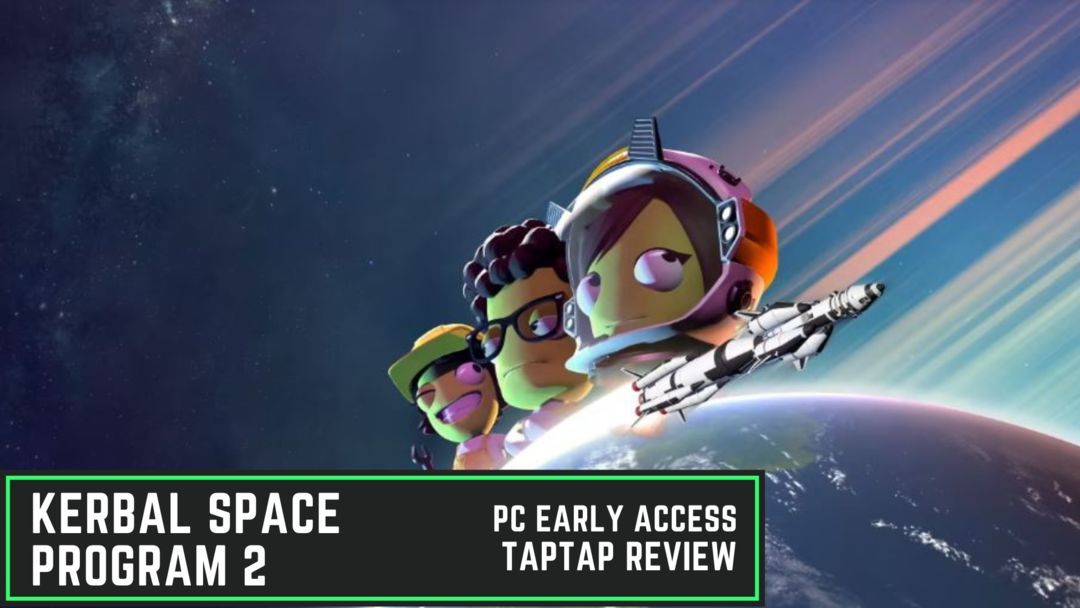A sluggish Early Access lift-off | Full Review - Kerbal Space Program 2

Kerbal Space Program 2 is now released in Early Access. Is it a decent follow-up to one of the greatest spacecraft physics simulation games of all time — Kerbal Space Program?
🟩Pros
+A highly educational game about real-life spacecraft physics
+Highly accurate simulation of space orbits
+A good foundation is laid for future content
🟥Cons
-Missing even the core features from the first game
-All the added features like multiplayer are not yet present
-No modding support yet
-$50 for an Early Access without much starting content is too much

Is it a decent follow-up?
That question is a tall order. The first game, even while still in the Early Access stages, was already well received consistently up to its release and post-release. In addition, similar games have come out since the first game that improved this simulator genre a lot like Juno: New Origins (Formerly Simple Rockets 2).
Realistically, I had mixed expectations for this game. For sure, it will be hard to top the original with its lifetime of updates and mod content readily available, especially with the changes with the developer and publisher. Unfortunately, my expectations were well placed, as Kerbal Space Program 2 — in it’s current state — is only but an empty shell compared to what the original game currently offers.

For genre newcomers, Kerbal Space Program 2, or KSP2, is essentially a space flight simulator that offers players the opportunity to design, engineer, build, and launch their own rockets, spacecraft, and planes as they attempt to explore the vast reaches of the fictional Kerbol System and beyond.

Players control the Kerbals, an up and coming alien species living in the Kerbol System. They’re cute, quirky, clumsy, and funny looking green aliens that add a sense of humor and silliness to the game, providing us relief from the grim and dangerous nature of space travel.

This game is hard to learn, and hard to master. After all, players are learning real-life orbital mechanics and physics. The learning curve is so steep you might as well call it a cliff. Luckily, there are tutorials that can help the player, and it takes its sweet time unloading all these highly technical information to the players to ensure it is as comprehensible as it can be. If these still don’t work, then the experimentations and trial and error are all part of the game anyway, and players can learn from that too.

The graphics are pleasant, with higher resolution textures, more advanced lighting, particle effects, and atmospheric effects like clouds all helping create a realistic feel to match the simulator nature of the game.

Gameplay Analysis
Kerbal Space Program 2, like the first game, features in some degree a highly realistic physics engine, which accurately models the forces and effects of gravity, aerodynamics, and orbital mechanics. This means that players must carefully plan and execute their missions, taking into account factors such as weight distribution, atmospheric drag, fuel consumption, and gravitational effects from celestial bodies.

This realistic simulation creates a rewarding and engaging gameplay experience that challenges players to think creatively but at the same time critically, and learn about the real-life science of space travel. From designing and testing the spacecraft themselves, it can already take players countless hours of tinkering and experimentation. This is not even accounting the actual missions that players partake into which also takes a lot of time and effort, and this is where Kerbal Space Program 2 currently lacks: the content.

However, what Kerbal Space Program 2 does well is the initial accessibility and setting up the necessary foundation and architecture for additional content that hopefully, will eclipse the scope of the first game after many years.
For the succeeding points, I’m going to heavily compare KSP2 to the first game, and see what has changed, what’s missing, and what’s promised.

Changes:
For starters, the game is more presentable now, even beginning with a cinematic introduction sequence to the game that adds a lot of flavor and appeal factor. In the first game,players really had to like and be able to understand the gameplay on their own in order to be hooked. Compared to now, animated tutorials and gameplay prompts are immediately present, with a helpful AI assistant called P.A.I.G.E. that guides players in grasping the highly steep learning curve of the game.

KSP2 also now offers different difficulty settings that alter the gameplay: docking tolerances, reverts, quickloads, and communication protocols are all customizable. There are even toggle-able cheats for those looking for the ultimate sandbox experience.

Parts are now highly customizable, with some parts dynamic and adjustable in angles, and even color. The first game only had prefabricated parts and sizes to choose from. However, fuel tanks are still prefabricated and not dynamic which is disappointing.

Missing:
There is currently no Career and Science Mode, these modes offer a gamified and a progression-oriented experience that will encourage and motivate players and add more meaning and substance to their playthroughs. Right now, all that exists is a sandbox mode. Other missing features that were present in the first game are resource gathering, asteroids, and comets. Some aspects like first person cockpit view are also missing.
One of the biggest reasons why the first one was so successful was modding support, with the community providing a lot of heavy lifting for extending the longevity and versatility of the game, to the point that various former mods have eventually become vanilla features of the game.
Regrettably, modding for KSP2 is currently unsupported. These missing features make KSP2 utterly inferior to the first game right now.

Promises:
Interstellar Travel, Multiplayer, and Colonies. Players will now be able to travel to neighboring star systems, participate in large scale base building, and play with friends. Currently, none of these exist in KSP2, but they are promised in a future update. Ironically, many of these gameplay features are already somehow present in KSP1, via modding, but native support is almost always better!

Technical Performance:
The performance right now is extremely bad. I’m on a RTX 3080, 32GB RAM, and an i7-8700k and I am getting below 30 fps when flying simple crafts. Anything outdoor will absolutely cripple your frame rates for no good reason.
While the graphics and visuals have improved a lot, I was expecting a relatively well performing game considering the first one was single-threaded and this one should have multi-threaded support by now.

The Price:
When KSP1 launched on Steam Early Access back in 2013, it was for $23, discounted even more for earlier adopters. It launched in a similar state as KSP2 is right now, but at KSP2's $50 launch price, it sends a different message to the consumers and one that’s not positively received. It is too high for what it offers and makes supporting the game ironically harder.

Conclusion:
It pains me to say this, but if you are looking for even the slightest enjoyable experience you could have with a space physics simulator that’s worth $50, I do not recommend buying Kerbal Space Program 2 at the moment. I would rather recommend the first game with its plethora of content and active modding community. If you are looking for a mobile counterpart that's also playable, you can try Juno: New Origins for a tenth of the price.
Only buy this if you want to actively support the development and have extra cash to burn. Note that a purchase of this title will mean you’re in it for the long haul, expect this game to be utterly inferior to the first game for a couple of, if not many, many years, and there are even no guarantees it can reach the end stages.
Mentioned games



